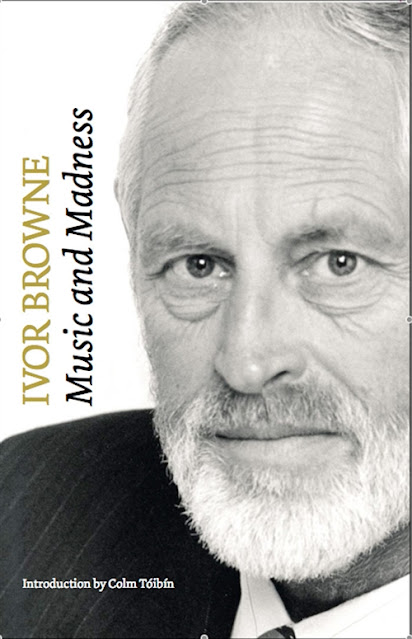Point Omega
By Don DeLillo
(Picador, £14.99stg hardback)
Since 1997’s epic tome Underworld, and in contrast to the solidly built, medium-sized, middle-period novels which consolidated his reputation, The Names, White Noise and Libra, Don DeLillo has worked on considerably smaller canvasses, with novella-length fictions The Body Artist, Cosmopolis and Falling Man. Point Omega continues this minimalist, or should that be miniaturist, trend, prompting comparisons with the late stylistic shifts of master practitioners as diverse as Hemingway and Beckett, if not in terms of the actual realised signature styles themselves, which are as individually traceable as DNA samples, then at least in terms of approach and intent. For DeLillo, like these illustrious exemplars, is one of those rare writers who has remade language in his own image, and so also has given us, almost as a seemingly incidental by-product, a unique worldview.
This is achieved in part by the highly stylised, call-and-response dialogue, more incantatory than ordinary conversation, which cries out to be called hypnotic, or hyper-real: ‘ “You need an answer. Is that what you’re saying?” “I need an answer.” “You have a life back there.” … “A life. That may be too strong a word.” … “You’re not married, am I right?” “Separated. We separated,” I said. “Separated. How familiar that sounds.” ’ But it’s also a question of thematics, and how these themes are subsumed into and altered by the style, the filtration process yielding new meanings. Death; dread; paranoia; mediation; perception and the nature of reality: all the old warhorses don’t look quite the same after being pressed into and passed through the refined language blender, condenser, purifier.
The title comes from the Jesuit priest-philosopher Pierre Teilhard de Chardin (1881-1955), who posited an evolutionary belief that there is a point of perfection which the universe, or consciousness, will eventually achieve, which in DeLillo’s spin thereon may well be coterminous with extinction thereof. ‘ “Father Teilhard knew this, the omega point. A leap out of our biology. Ask yourself this question. Do we have to be human forever? Consciousness is exhausted. Back now to inorganic matter. This is what we want. We want to be stones in a field.” ’
Teilhard is here being referred to by Richard Elster, an ageing ‘defense intellectual’ who has written a journal article on the etymology and possible meanings of the word ‘rendition’ and who, like Paul Wolfowitz and his ilk, was brought out from under his academic rock by the Bush administration to lend an air of respectability and justification to the pro-war policies of the most appalling regime in American history, and obligingly told his patrons everything they wanted to hear. The ‘blat and stammer of Iraq’, he ruefully recalls assuring them, would be ‘a Haiku war, a war in three lines’.
Elster is conversing with our narrator Jim Finley, a documentary filmmaker who is trying to persuade Elster to take part in a film he wants to make where the older man will talk about his two years at the Pentagon, and anything else that pops into his brilliant mind. But Elster is resisting, prevaricating, suggesting that what Finley wants is ‘ “…a public confession…A deathbed conversion….The foolishness, the vanity of the intellectual. The blind vanity, the worship of power. Forgive me, absolve me.” ’ They end up in California’s Sonoran Desert, in Elster’s crumbling rural retreat, mainly sitting on the deck, drinking and shooting that otherworldly, but instantly identifiable, DeLillo breeze.
They are joined by Elster’s mid-20s daughter Jessie, packed off from New York by her overbearing mother, in fear of a ‘persistent’ boyfriend. For a time things are companionable, then Jessie disappears. Searches ensue, to no avail. Elster disintegrates in grief. We never find out what became of her.
The desert scenes are framed by a brief prologue and epilogue, Anonymity and Anonymity 2, dated September 3 and 4 2006 respectively, which take place in New York’s Museum Of Modern Art, where Scottish artist Douglas Gordon’s 1993 video installation, 24 Hour Psycho, is showing. A man stands fascinated by this piece, in which the 109-¬minute Hitchcock original is slowed so that it takes a full day and night to roll by. Visual and verbal clues intimate that the man witnesses Elster and Finley enter the first day, Jessie the second day. The set-piece provides an excuse for ruminations on the nature of film, perception and time. Why 24 frames per second? Why not 2 frames per second?
Criticisms of this book will include that it is inconclusive, and that it contains no sustained analysis of what led Elster, and by implication, his real-life counterparts, to get involved with the Grand Old Party hacks. But maybe DeLillo is at a point in his writing life when he prefers to suggest things, rather than fully explore them. Might I suggest that, behind all the vague metaphysical speculation, Point Omega could be about such a quaintly old-fashioned concept as retribution? A man sells his sociopolitical soul for worldly recognition, and suffers a searing domestic tragedy at home. Of course, there is no direct causal link, or even verifiable connection, between the two events, but how could there be, in this post-theistic universe, where there is no controlling principle? Retribution it may be, but it sure ain’t divine.
The critic D.T. Max, in a New Yorker essay, quotes a 1997 letter written by DeLillo to fellow novelist David Foster Wallace: ‘I realised that precision can be a kind of poetry, and the more precise . . . then the better my chances of creating a deeper and more beautiful language.’ Consider, then, these random psycholinguistic observations from his powerful new fiction: ‘The true life is not reducible to words spoken or written, not by anyone, ever.’ ‘He had a good vocabulary except when he was talking to someone.’ Pairing back. Winding down. Leaving out. Turning off. Perhaps Don DeLillo has reached a Point Omega of his own.
First published in The Sunday Independent.








